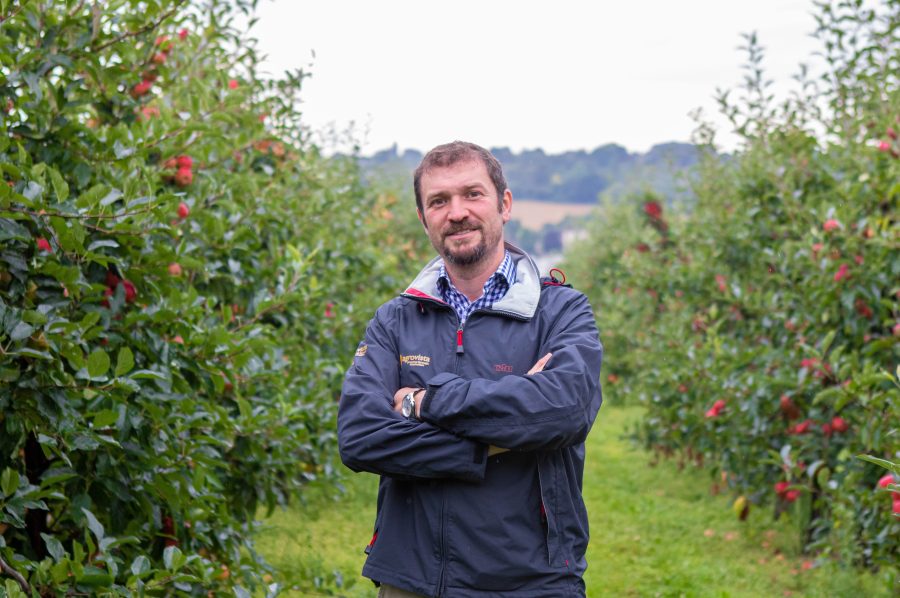With most codling moth traps in place and the season poised to begin this month, Alex Radu, technical manager for the Agrovista fruit team, advises growers to build control strategies around a mix of different products and actives.
“It is difficult to say how challenging this season will be for codling moth, but pressure always tends to be high in many top fruit areas,” says Alex. “We didn’t have a very hot summer last year, but there were some stations in our network that recorded a partial secondary generation.”
“Control strategies will depend on the type of grower. While organic growers rely on spinosad and granulosis virus, conventional farmers still have chlorantraniliprole available, as well as pyriproxyfen and, for the time being, also indoxacarb.
Alex’s use of prediction models is key to his control strategies. The Agrovista Fruit Insight application, which utilises weather data and models, provides timely updates on crucial events such as female flight, mating, egg laying, and larval emergence, enabling him and his colleagues to recommend control measures at the most effective times.
The necessity of applying control is determined using pheromone traps; the threshold is five or more moths captured per trap per week for the first generation, while only three for the second generation. On average, egg hatching takes seven to ten days, with systems like Fruit Insight allowing for a more precise measurement by factoring daily maximum and minimum air temperatures. The first application for each generation is timed to coincide with the onset of the egg hatch.
Alex begins his conventional programmes to control the first generation with pyriproxyfen, which is applied just before egg hatching begins. It has an ovicidal and insect growth regulator inhibitory effect, particularly at that stage. He prefers this to other products, as it is less detrimental to non-target organisms.
“Our applications are based on the Fruit Insight data. Coragen is planned as a follow-up application just before we get to the peak of the larval hatch,” explains Alex.
“Depending on the length of the larval hatch period, we often must do something after Coragen. For subsequent applications, I prefer to use Carpovirusine whenever possible over other options.
“Carpovirusine is the perfect IPM tool. It is target-specific with no negative impact on beneficials and non-target species. We get very good control from Carpovirusine but must be mindful of its persistence during adverse weather patterns.”
If there is a second generation, Alex’s programs are based exclusively on Carpovirusine. This is because it has zero residues and only a one-day pre-harvest interval.
“For organic growers, we start with Carpovirusine. We then often need to use Tracer (spinosad), which is timed for the peak of larval hatch. We use this for two reasons: it gives robust control of codling moths and also controls tortrix moth species.
“The peak of the codling moth hatch quite often coincides with tortrix activity,” adds Alex.
Alex is confident that codling moth programmes will deliver good control for conventional and organic growers if applications are timed correctly.







